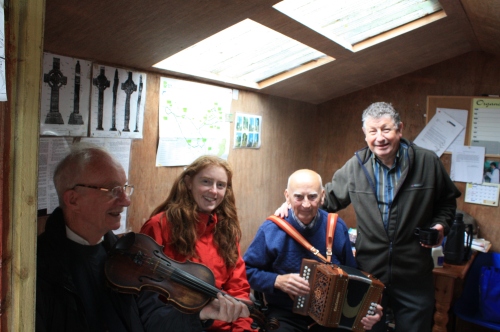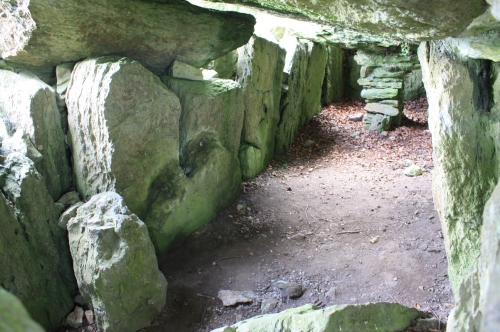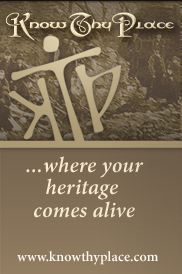Know Thy Place Director Colm Moloney recently took the opportunity to visit the fabulous early monastic site at Monasterboice, Co. Louth for the first time. He got much more than he bargained for when he entered the site, as he explains to us below!
My holidays in Scotland always begin with a mad dash up the new motorway from Cork to Belfast to catch the ferry to Stranraer. My wife and I decided to attempt to break the journey on our most recent trip by visiting an archaeological site neither of us had been to previously. Our choice was Monasterboice in County Louth (about 5 minutes off the M1).
Our visit was prompted by pure chance – we stopped when the drive got tedious and simply picked the nearest site to our location. It happened to be Monasterboice, an early monastic site located a short distance to the north of Drogheda on the main Dublin-Belfast motorway. It was one of those unpleasant days, a mixture of driving rain and gentle mist – a typical Irish summer’s day! However the weather did add a dramatic backdrop to the monastic ruins, so not to worry. There is no charge to visit the site although there is a small wooden shed near the entrance which sells books and trinkets (including a useful academic account of the monuments by Helen M. Roe).
When we approached the shed we were immediately engaged in conversation by a charismatic and enthusiastic local gentleman who appeared to be in charge of the shed – I am not sure if he worked there or just hung around to entertain tourists! He immediately started to tell us about the site, its history and the best approach to visiting the ecclesiastical remains considering the inclement weather. Halfway through his spiel, a second more elderly gentleman started belting out a few traditional Irish jigs and reels on a button accordion. When the first gent realised that my wife was Scottish he gave the musician the heads up and we moved seamlessly from Irish trad to Scottish folk.
We left the music, the site narration and the shed and headed into the ecclesiastical complex. The site was founded in the 5thcentury and is related to St Buithe. The surviving complex of structures centres on two medieval churches, a round tower and group of decorated high crosses. The site is still used as a cemetery so modern graves are interspersed with the archaeological remains.
Although the churches and round-tower are of great interest, the high-crosses are spectacular. I had read about them and seen photographs, but the scale and detailed decoration of these amazing monuments is absolutely breathtaking when viewed up close and personal. Two of these are exceptional and rate amongst the best examples of their type in the country. Both probably date to the tenth century.
One of the crosses bears an inscription stating that it was erected by Muiredach and it is known as Muiredach’s Cross. This cross is simply massive, standing 5.5 m tall and heavily decorated with images from the bible including the crucifixion, the resurrection, Caen and Abel, David and Goliath and many more. One panel near the base stood out for me. This consisted of two seated men who appear to be pulling each others beards – a possible indication of a sense of comedy in the sculptor! The base is heavily decorated with Celtic knotwork. The second of the two exceptional crosses is known as the West Cross, which although more slender that Muiredach’s Cross is also beautifully decorated. An early example of a sundial also stands amongst the crosses and gravestones.
We left the core of the monument and headed back to the car. As we neared the exit our story-teller was waiting and dragged us back to the shed. A second musician had turned up and by now the shed was rocking to the sounds of a fiddle and button accordion. My wife was guest of honour in the shed and the duo were determined to play every Scottish tune she could recall (we were even offered a cup of tea!). We would have stayed for hours if we didn’t have to catch a ferry. The experience left me feeling that tourism in Ireland may be missing a trick. The fusion of an amazing heritage site and living culture in the form of traditional music and story telling was truly fantastic. This is surely a model that could be rolled out more extensively by the powers that be in Irish tourism.
















